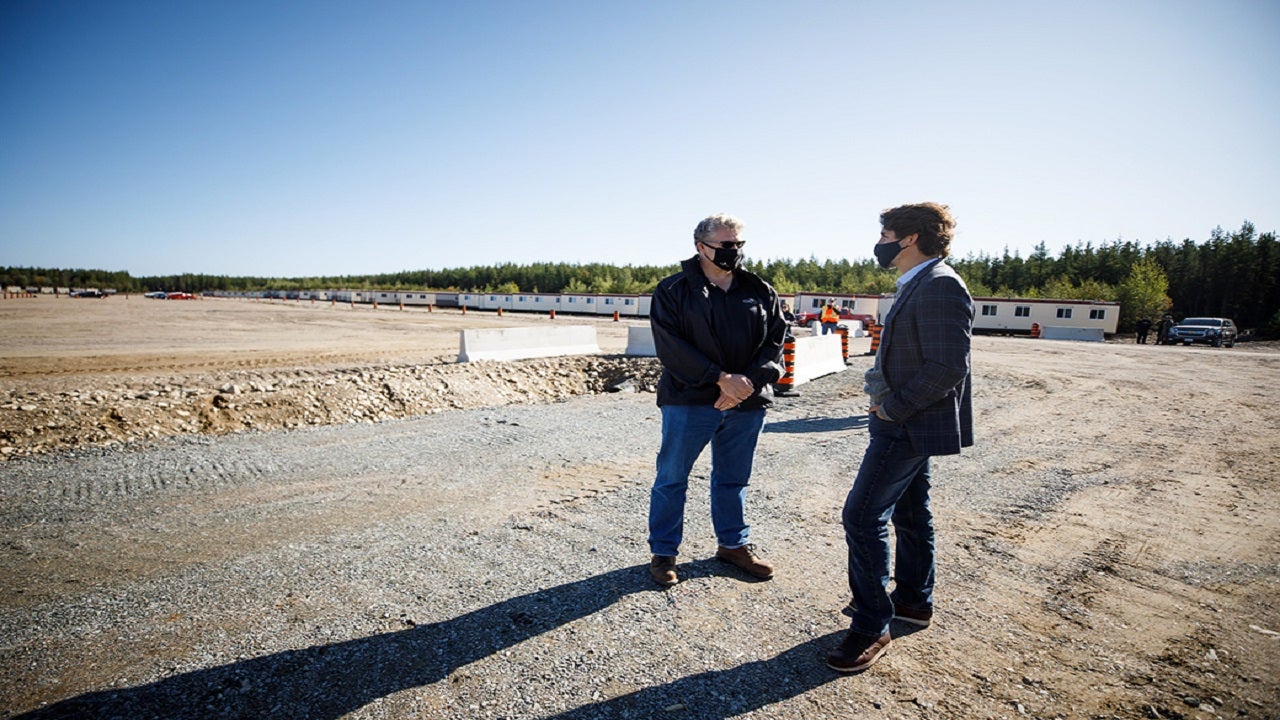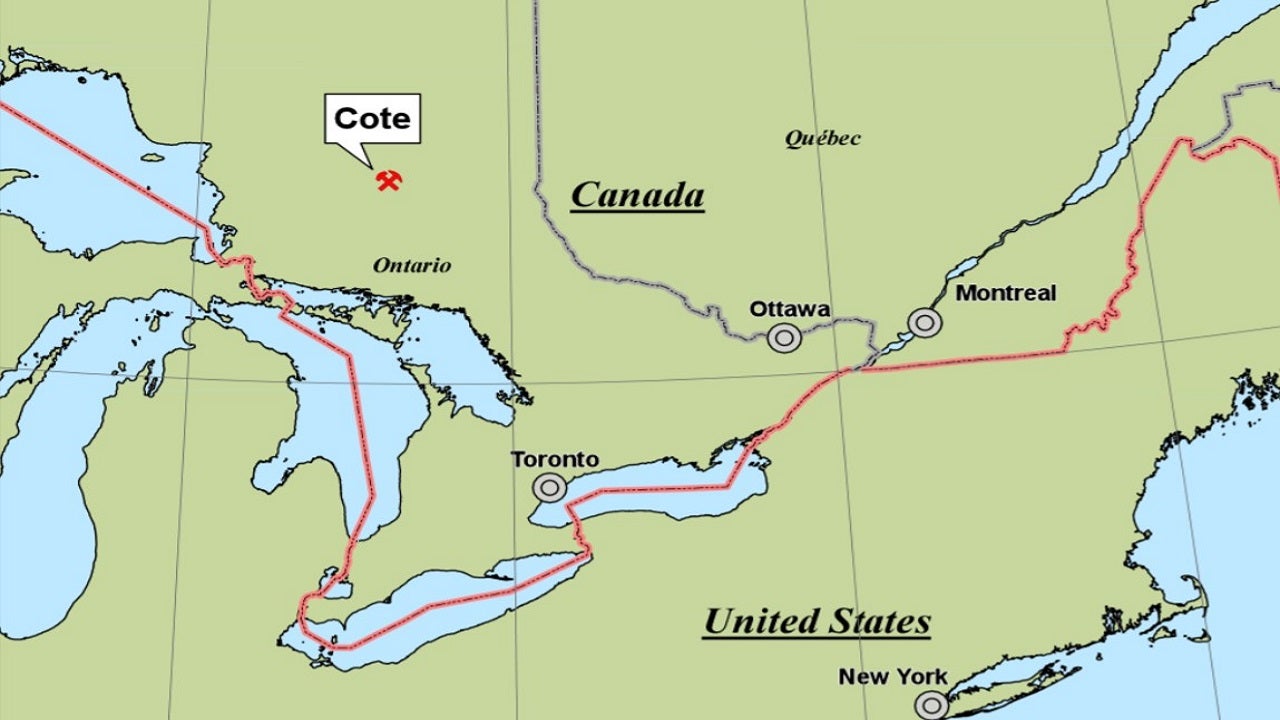The Cote gold deposit is being developed as a $1.3bn open-pit gold mine in northeastern Ontario, Canada. It is expected to produce 367,000 ounces (oz) of gold annually over its 18-year mine life.
A joint venture between Iamgold and Sumitomo Metal Mining (SMM) holds a 92.5% interest in the project. The remaining stake is owned by multiple investors. Iamgold and SMM respectively owns 64.75% and 27.75% in the project.
Iamgold originally acquired a 92.5% stake in the project through the purchase of Trelawney Mining and Exploration in 2012. It entered a 70:30 JV agreement with SMM for disposing of its 27.75% interest in June 2017.
The Canadian gold project is expected to create more than 1,000 jobs during the construction phase and 450 during operations.
Cote gold project background and development details
Exploration activities in the area started in early-1900s but more intensive mineral exploration was undertaken in the 1940s and from the 1970s to 1990. Trelawney began exploration activities at the site in 2009 and conducted extensive diamond drilling activities to delineate the Cote deposit since it was discovered in 2010.
A feasibility study for the project was announced in November 2018, followed by the construction decision approval in July 2020. Construction on the project began in September 2020 with a ground-breaking ceremony. The mine is expected to begin full production in mid-2023.
Cote gold project location and geology
The Cote gold project is located in the Chester and Yeo Townships, within the Sudbury district in Ontario.
It is approximately 20km from Gogama, 130km from Timmins, and 200km from Sudbury.
The gold deposit is hosted by the multi-phase, laccolithic-shaped Chester intrusive complex (CIC), a synvolcanic intrusion comprising diorite and tonalite. It is characterised by magmatic and magmatic-hydrothermal breccia bodies that intrude dioritic and tonalitic rocks.
The diorite includes elevated light rare earth element (LREE) patterns unlike the tonalite, which includes a flat and less fractionated REE pattern.
The CIC intruded into the Arbutus formation, which is the basal formation in the Chester group. The Arbutus formation comprises mafic flows, sills, and low-K tholeiitic pillow basalts.
The tonalite and diorite intrusive phases were accompanied by magmatic-hydrothermal brecciation and the positioning of different stages of gold-bearing veins. The deposit was subsequently intruded by various kinds of dike rocks and underwent deformation.
Reserves at Cote gold project
The Cote gold project is estimated to contain 233 million tonnes (Mt) of proven and probable reserves graded at 1.0g/t, with contained gold of 7.28 million ounces (Moz), as of December 2019.
Mining at Cote gold project
The project will involve the construction, operation and reclamation of an open-pit mine, with a daily ore production rate of approximately 60,000t. The mine will employ a truck-shovel operation, with 220t autonomous trucks and 34m³ shovels.
The open-pit will be designed with four nested phases to handle stripping requirements and accommodate the needs of the processing plant. The final pit design considers 196Mt of ore and 559Mt of waste. Open-pit mining operations under the base case mine plan will involve the extraction of 46Mt during the pre-production period of two years, followed by production mining for a period of 14 years.
Stockpile reclaim will extend the milling operation by two more years. Production mining under the extended mine plan is envisioned to be implemented for 16 years.
Processing
The processing circuit will include primary and secondary crushing, tertiary high pressure grinding roll (HPGR) crushing, ball milling, gravity concentration and cyanide leaching. Gold will be recovered using carbon-in-pulp, stripping and electrowinning. Tailings management will include cyanide destruction and tailings thickening, with plans for a thickened tailings management facility.
The plant will have a daily throughput of 32,000t with a plant availability of 94%.
Infrastructure
Infrastructure at the Cote gold project will include upgrading an existing transmission line from Timmins to Shining Tree Junction and the installation of a new 115kV transmission line from Shining Tree Junction to the mine site.
Other infrastructure to be developed at the site includes watercourse realignment dams and channels, a new lake, polishing and tailings reclaim ponds, and systems for collection, surplus water discharge, and dispersion.
The project will also create a tailings management facility (TMF), a permanent accommodation camp, an emulsion plant, workshop, offices, and other services, and a 12km-long gravel access road from the nearest highway.
Contractors involved
Wood will provide engineering, procurement and construction management (EPCM) services for the gold project’s processing plant, tailings and water management under a contract received in December 2020.
The company has been providing design and project delivery solutions for the project over the last eight years.






